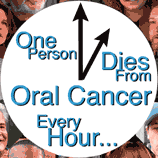 June 1, 2009 - North Carolina lawmakers have finally agreed to a statewide ban on smoking in most bars and restaurants and Gov. Perdue cheerfully signed the legislation into law last week.
June 1, 2009 - North Carolina lawmakers have finally agreed to a statewide ban on smoking in most bars and restaurants and Gov. Perdue cheerfully signed the legislation into law last week.
Smokers have a right to choose as well. Maybe now they'll choose to quit. Maybe the sheer frustration of finding somewhere to light up will make them throw up their hands ... give up, quit, desist. And stop standing alone in the cold, doing something they know is bad for them.
Harm reduction proponents say one viable path to quitting smoking ought to be a lesser evil: smokeless tobacco products. Murray Kessler formerly the chairman and CEO of UST and now a vice-chair at Altria has stated that nine out of ten smokers who try smokeless still reject the product.
An inveterate (hard-nosed, established, refuses to consider quitting the use of tobacco) smokers switching to smokeless tobacco may result in "harm reduction."
Smokeless tobacco is less likely to be fatal. Michael Thun, MD, American Cancer Society, Vice President of Epidemiology and Surveillance Research - "There is no evidence that smokers will switch to smokeless tobacco products and give up smoking. Encouraging smokeless tobacco use is not only a dangerous tactic in the drive to reduce smoking rates, but scientifically unproven as well.." Brad Rodu,DDS an oral pathologist and professor of Medicine at the University of Louisville, has argued passionately in these pages that smokeless tobacco provides a nicotine fix without causing smoking-related diseases. This gentleman who has accepted millions of dollars from smokeless tobacco companies lacks credibility even though he'll tell you he can act independent of these providers. Tobacco harm reduction chief spokespersons not concerned about kids..
Brad Rodu,DDS an oral pathologist and professor of Medicine at the University of Louisville, has argued passionately in these pages that smokeless tobacco provides a nicotine fix without causing smoking-related diseases. This gentleman who has accepted millions of dollars from smokeless tobacco companies lacks credibility even though he'll tell you he can act independent of these providers. Tobacco harm reduction chief spokespersons not concerned about kids..
Further, smokeless tobacco does not produce smoke, hence it eliminates the dangers of secondhand smoke.
Some public health professionals seem to think SNUS should be used as a harm reduction product in inveterate (firmly and long established) smokers that have no interest in quitting. But the tobacco companies are targeting a much younger crowd of young adults and any kids they can entice along the way - just take a look at the ads and the tagline: "Pleasure for wherever."
Don't reach for that pouch of chew just yet. Comments of Dr. John Spangler, M.D., MPH is one of the world's leading experts in tobacco epidemiology. He founded the first physician-run tobacco-cessation clinic at Wake Forest University, School of Medicine.
Comments of Dr. John Spangler, M.D., MPH is one of the world's leading experts in tobacco epidemiology. He founded the first physician-run tobacco-cessation clinic at Wake Forest University, School of Medicine.
Smokeless tobacco contains at least three known carcinogenic agents: N-nitrosamines, polycyclic aromatic hydrocarbons and radioactive polonium 210. It increases the threat of various oral cancers.  It also has been associated with esophageal, pancreatic, prostate and kidney cancer, possibly even heart disease.
It also has been associated with esophageal, pancreatic, prostate and kidney cancer, possibly even heart disease.
And when it does kill, it can do so with a vengeance. Even for those who survive, it can leave behind scars and disfigurement, including the removal of all or part of the jaw and the loss of the ability to chew, smile, swallow or kiss.
Further, it already appeals to young people. According to the National Cancer Institute, smokeless tobacco use already is most common among adults ages 18 to 25.
Promoting it as a safe alternative could encourage even more use by young people.
Spangler: "Those who argue in favor of smokeless tobacco as a means to quit smoking -- an 'alternative' to cigarettes, if you will -- ignore the fact that there is not a shred of scientific evidence showing, in a randomized, controlled clinical trial setting, that smokeless is effective in helping patients quit smoking. This is the level of evidence that the FDA requires before a drug company can market a drug. We should insist on that level of evidence before we start pushing a product that is already known to be unsafe."
Harm reduction can be an effective approach in some cases -- for example, providing clean needles to drug addicts to help control the spread of AIDS. But not in this instance, when other, safer alternatives such as nicotine patches are readily available.
Those who are considering going smokeless should chew on that first.
Other articles with a similar focus have published recently: Are tobacco companies going to far?, posted by Sarah Harlan, WFIE>com, 5/27/2009 and Beware, parents, smokers and nonsmokers, of new tobacco marketing by Dr. James H. Baker, muskogeephoenix.com, 5/30/2009.
Reference: Here's hoping new smoking ban helps protect smokers from themselves by Allen Johnson, 5/24/2009.
Bringing the World of Tobacco Control closer together..
Some facts for smokers to consider before considering smokeless tobacco..
Subscribe to:
Post Comments (Atom)


To Provide Public Awareness
Purpose
About Us
Contact Us
2008 HIGHLIGHTS
TOPIX PAPERS - 2008 & 2009..
Archive
-
▼
2009 (1446)
-
▼
05/31 - 06/07 (25)
- BAT's deathly lobbying agenda in the EU ..
- National Day of Sweden (Sveriges nationaldag), Jun...
- New York State fewer people smoking..
- Cigarette smuggling from Virginia to New York..
- U.S. Senator Tom Coburn suggests banning tobacco o...
- Rwanda - retailers hike cigarette prices
- Rwanda public smoking down..
- Cambodia - graphic warnings soon to be on cigarett...
- Imperial Tobacco - Canada Head - Canada growing...
- Indonesia - students/activists hold rally to ban c...
- Pakistan - strong tobacco control measures..
- R.J. Reynolds loses Florida court trial - widow g...
- Malaysia: Are tobacco control measures working? - ...
- Mississippi Governor Barbour - would add 2-new t...
- R.J. Reynolds launches retailer website for their...
- Commentary on - "Tobacco Bill Could Snuff Out RJR'...
- Nebraska - smoking ban - started at midnight on W...
- North Carolina smoking ban includes banning hookah...
- New Zealand - stop smoking campaigns NOT working..
- Philip Morris - keep the mailing list growing..
- What's Next ?? - - U.S. single cigarettes (loosies...
- South Australia - Annual Dirty Ashtray Award..
- Some facts for smokers to consider before conside...
- India - Still no pictorial warnings on cigarette p...
- Altria a tobacco giant with monopolistic character...
-
▼
05/31 - 06/07 (25)
© Copyright Notice: The content of this website is for information education purposes only and any newsbrief may be used only as "fair use" for information/education purposes with permission of the authors and providing that original references and associated reference links are included in HTML format.
0 comments:
Post a Comment